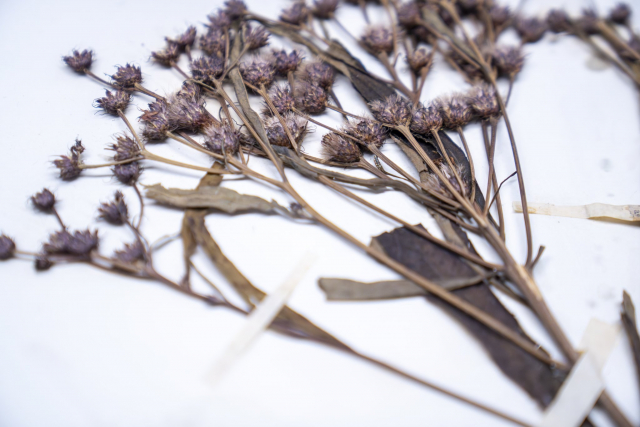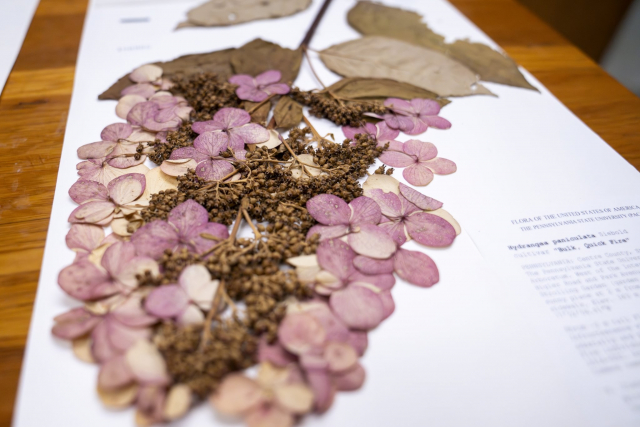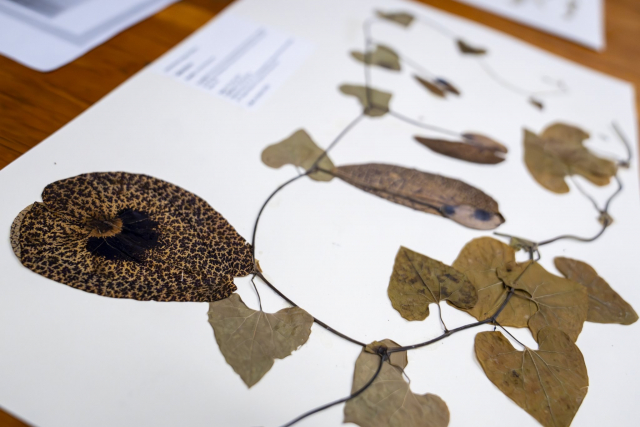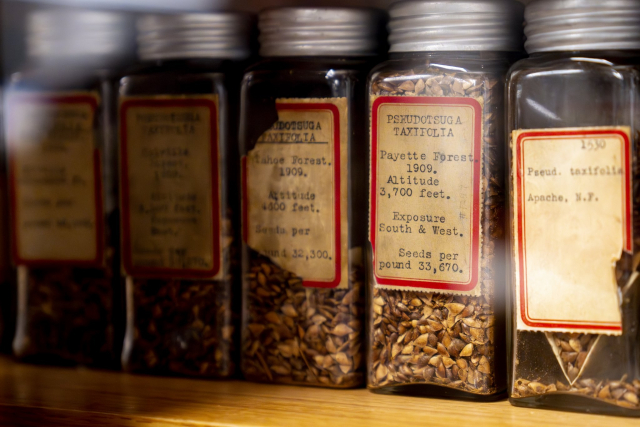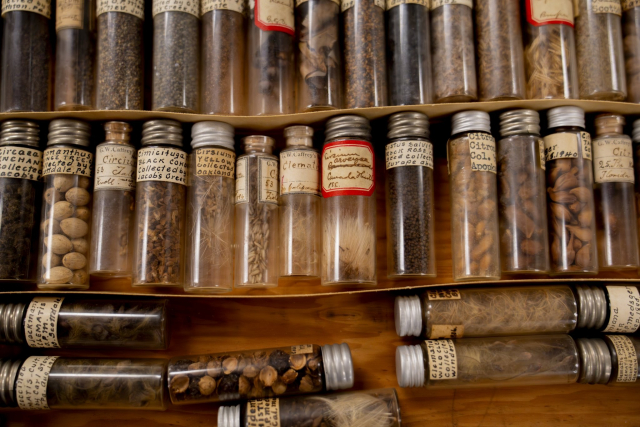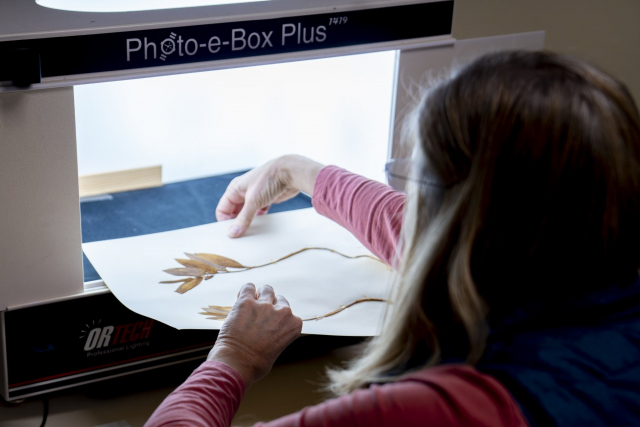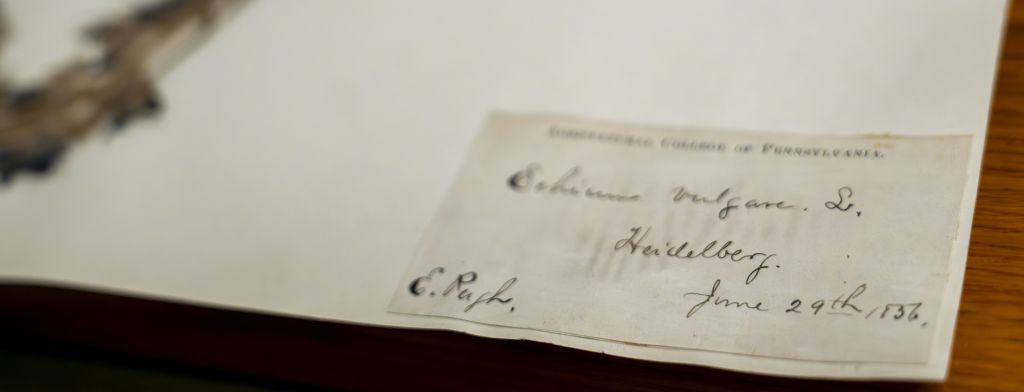
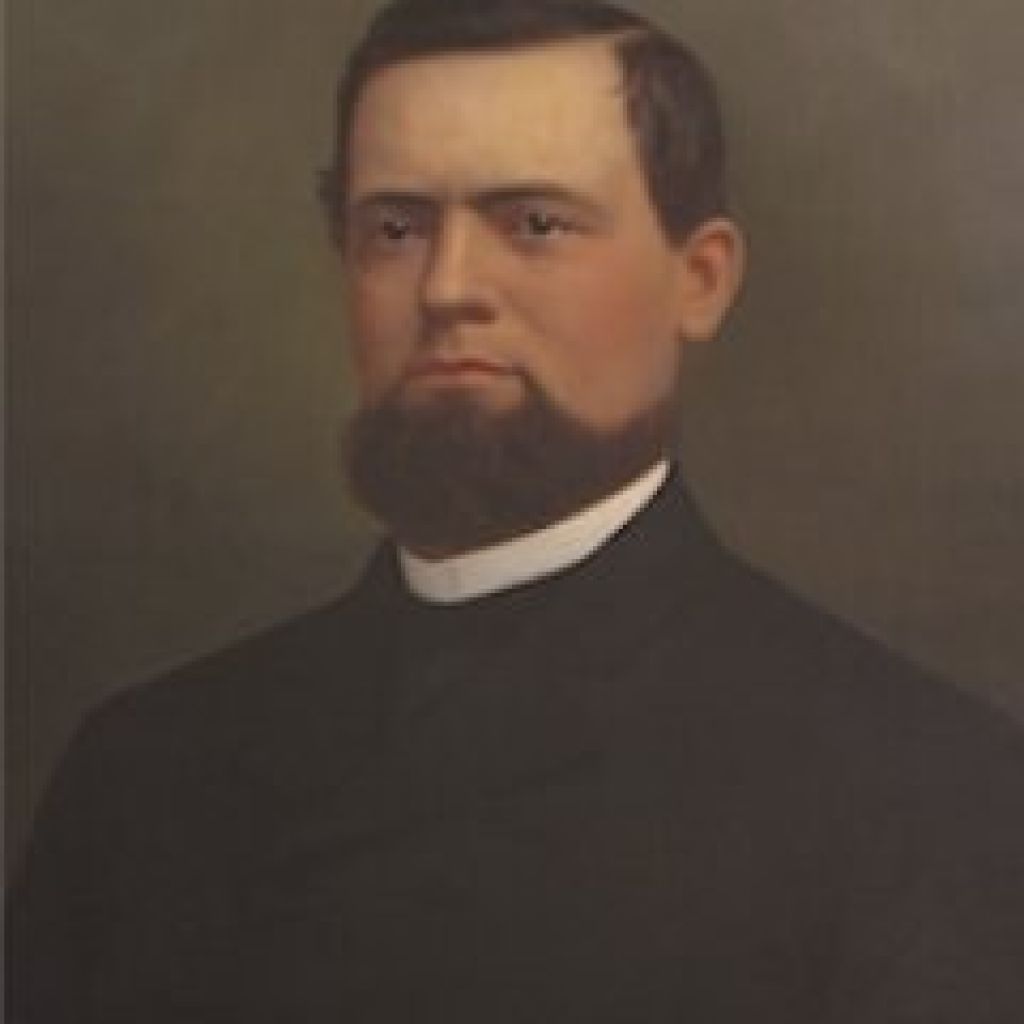
The Pennsylvania Agricultural College (PAC) Herbarium represents one of the oldest natural history collections at Penn State University. Established in 1859 with 3,000 specimens donated by Penn State’s first president, Evan Pugh, the collection has since grown to over 100,000 items including mounted voucher specimens, seed vials and jars, and specimen jars which hold a portion of the algal collection.
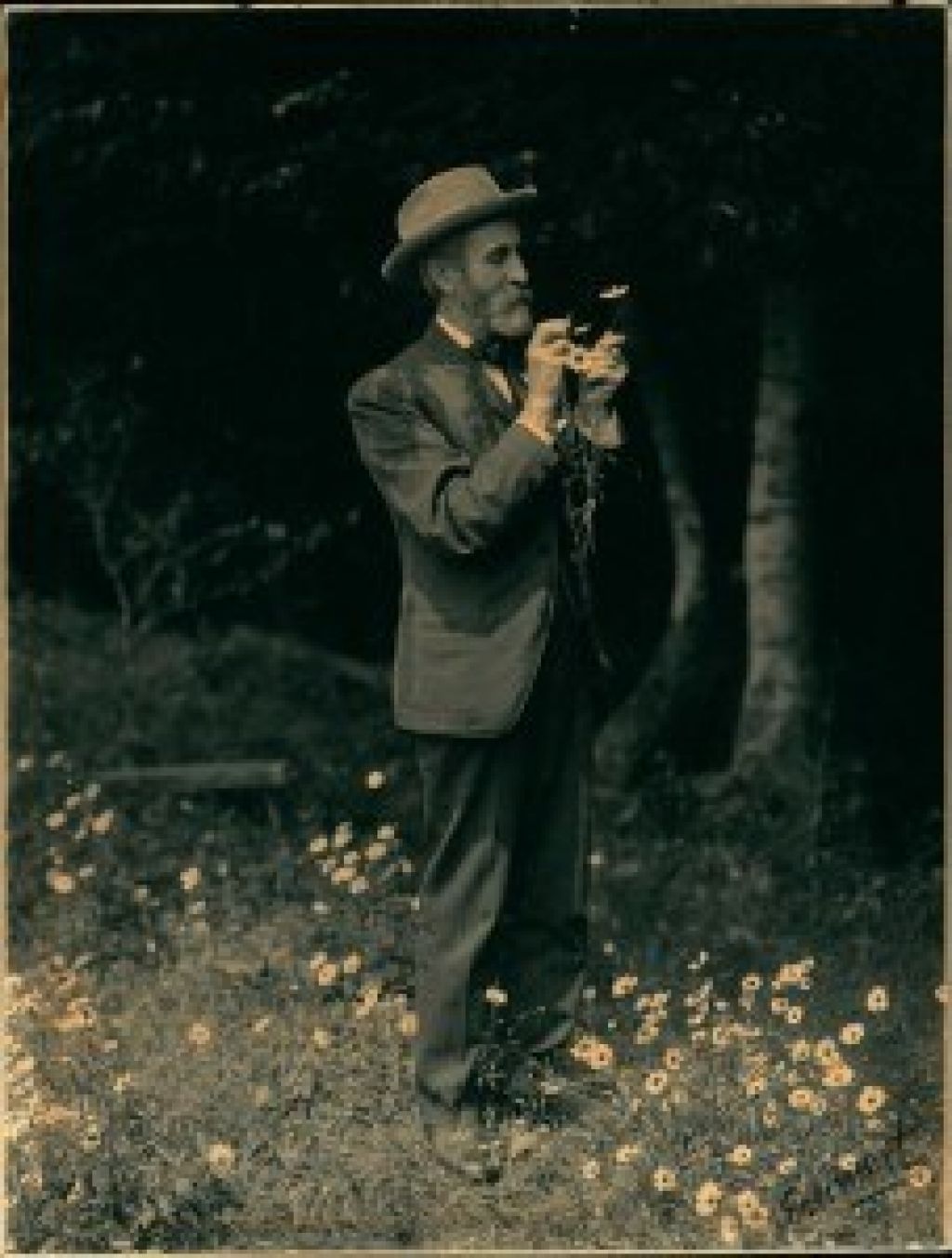
The age of the collection spans almost two centuries, from the oldest specimen collected in 1830 up to the present day. In the wake of Pugh’s untimely death in 1864, an emergency inventory of the belongings of the Pennsylvania College of Agriculture lists “Dr. Pugh’s European Herbarium” as a significant asset to the nascent university (Traverse 2013). With the loss of Pugh, the Department of Botany found new leadership in William Buckhout, a former student of renowned American botanist Asa Gray. Buckhout directed plant research and teaching at Penn State from 1871 until his death in 1911.
Buckhout was succeeded by James Kelly, a geneticist who studied the inheritance of flower form and color. Kelly was followed by Herbert Wahl, a botanist specializing in the flora of Pennsylvania, particularly Carex and Chenopodium.
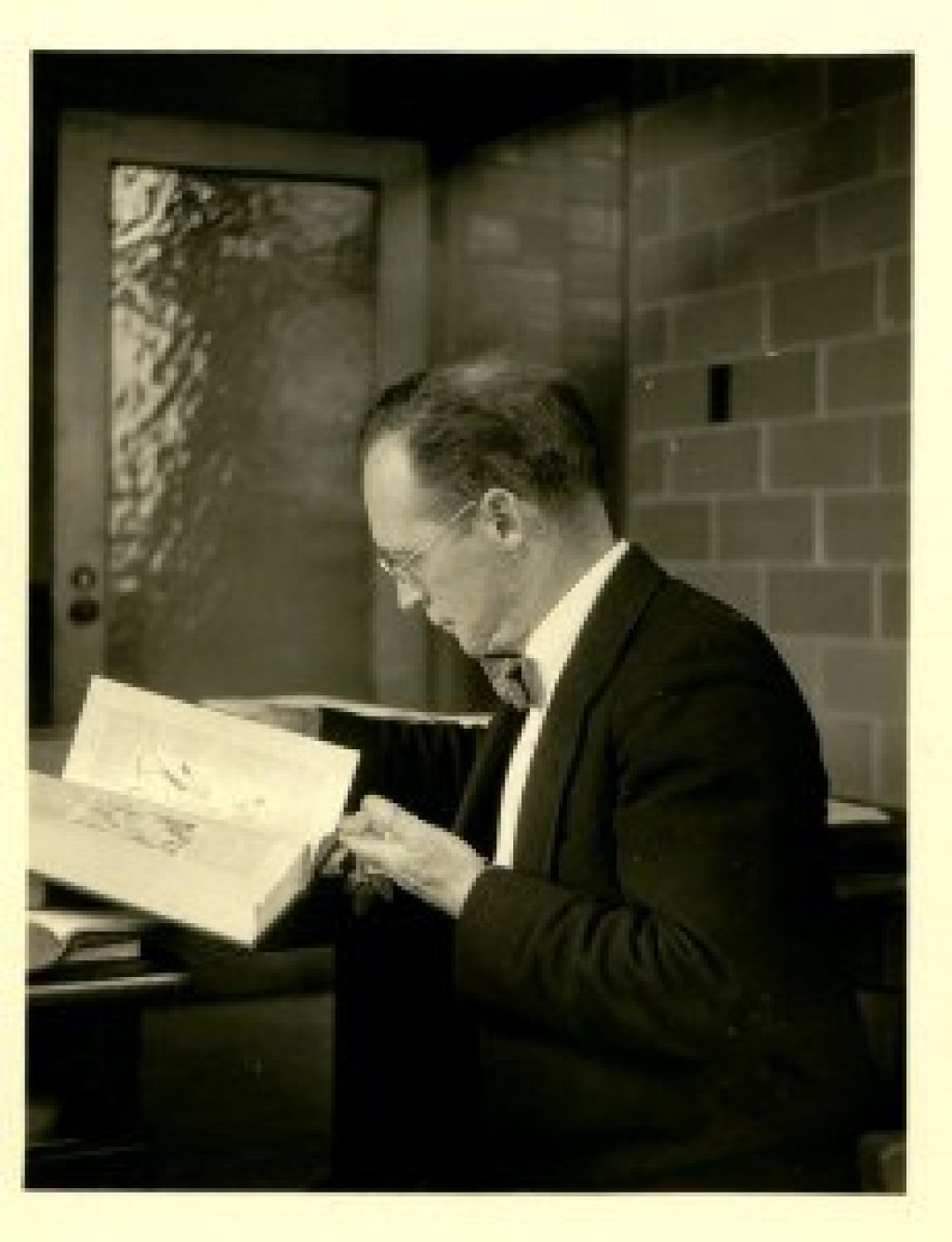
Wahl served as Curator of the PAC until he retired in 1966. It was during his tenure that the herbarium added many new specimens primarily through the collections of his protégé Walter Westerfeld. In 1966, Carl Keener was appointed Curator overseeing the collection as a professor in the botany program until 1997. Keener focused largely on organizational efforts to bring the collection in line with modern systematics, while expansion of the collection was facilitated via gifts from other herbaria as well as student vouchers from county inventories.
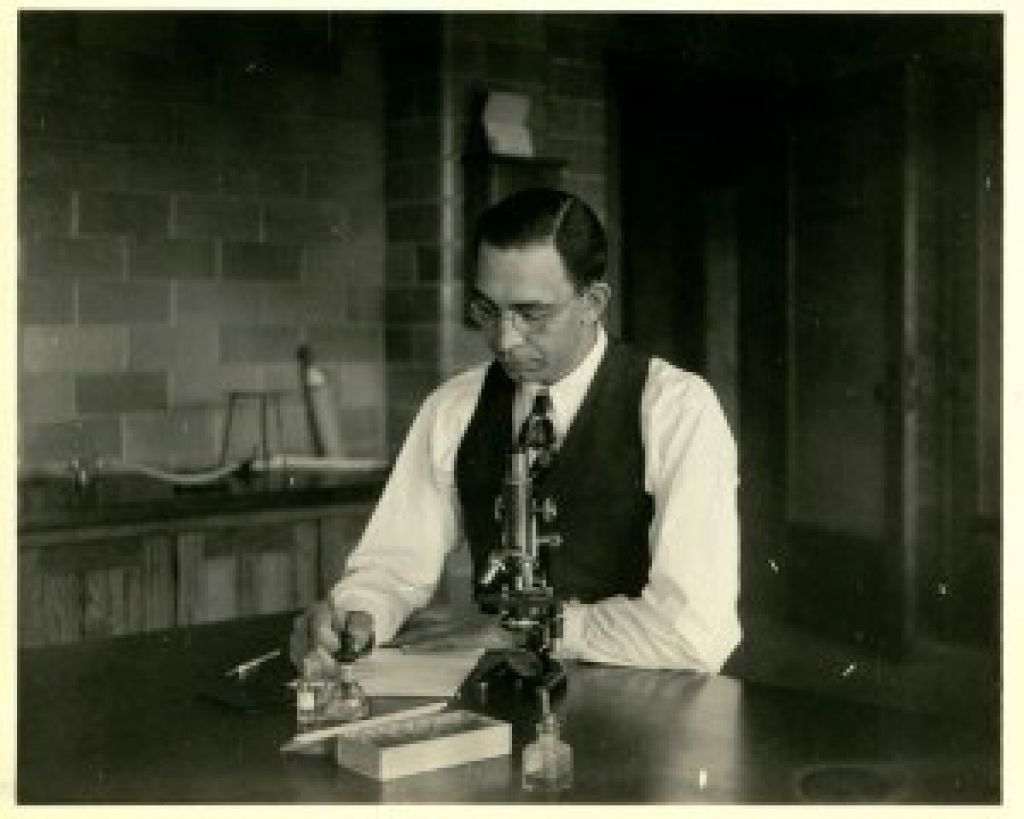
During Keener’s tenure, Ronald Pursell was named Curator of Bryophytes and his extensive studies of Fissidens (Pursell 1994, Pursell 2002, Pursell and Bruggeman-Nannenga 2004, Pursell 2007, Pursell and Allen. 2010) informed many subsequent studies including the bryophyte section of the Flora of North America. With the retirement of Keener and his colleagues, the botany program at Penn State languished and the PAC Herbarium’s future was uncertain. It was around this time that a plan to move the PAC to a storage facility off campus created a groundswell of support for the collection to remain on campus and accessible for research, teaching and service activities. This culminated in 2005 in a joint effort by faculty and students to save the herbarium led by Director Claude dePamphilis.
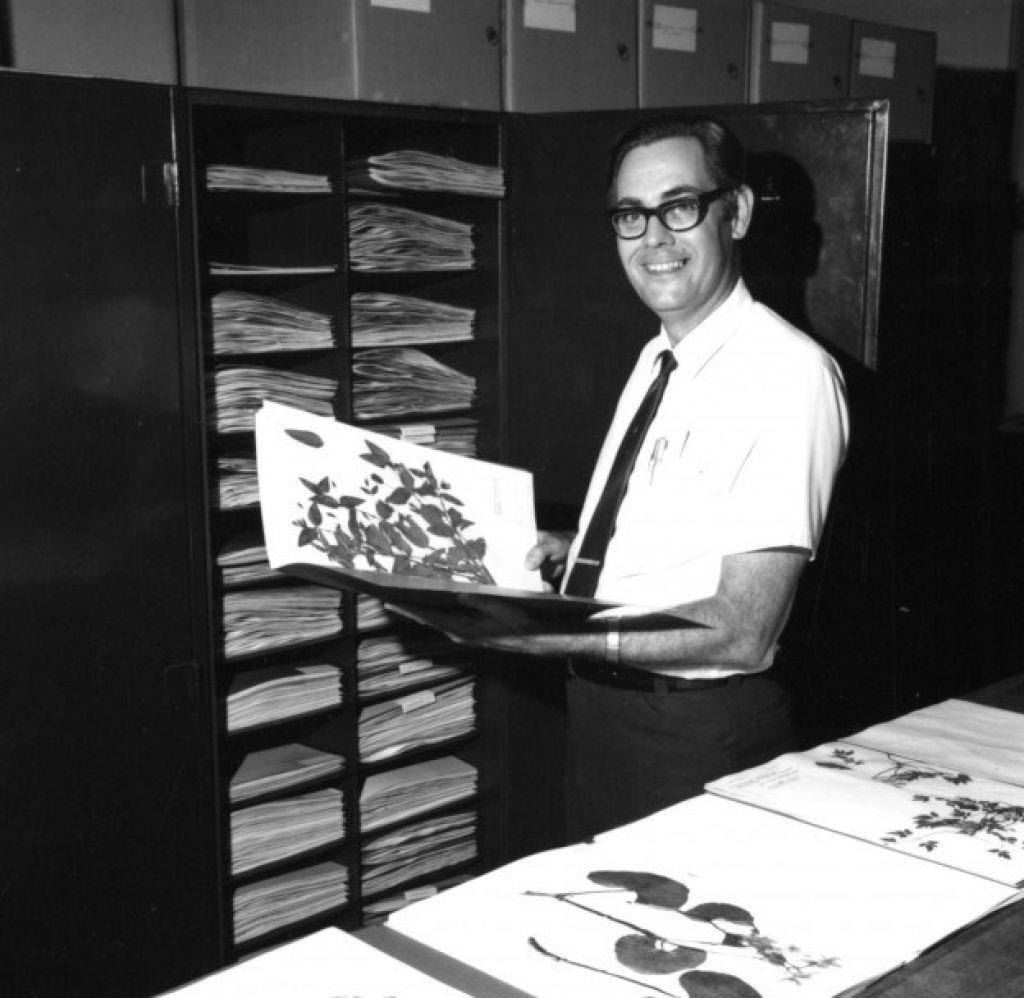
The successful effort resulted in the PAC’s move to its present location in 13 Whitmore Laboratory in central campus, along with increased investment in the collection by the University in the form of a high density storage system and infrastructure improvements to provide a climate-controlled environment.
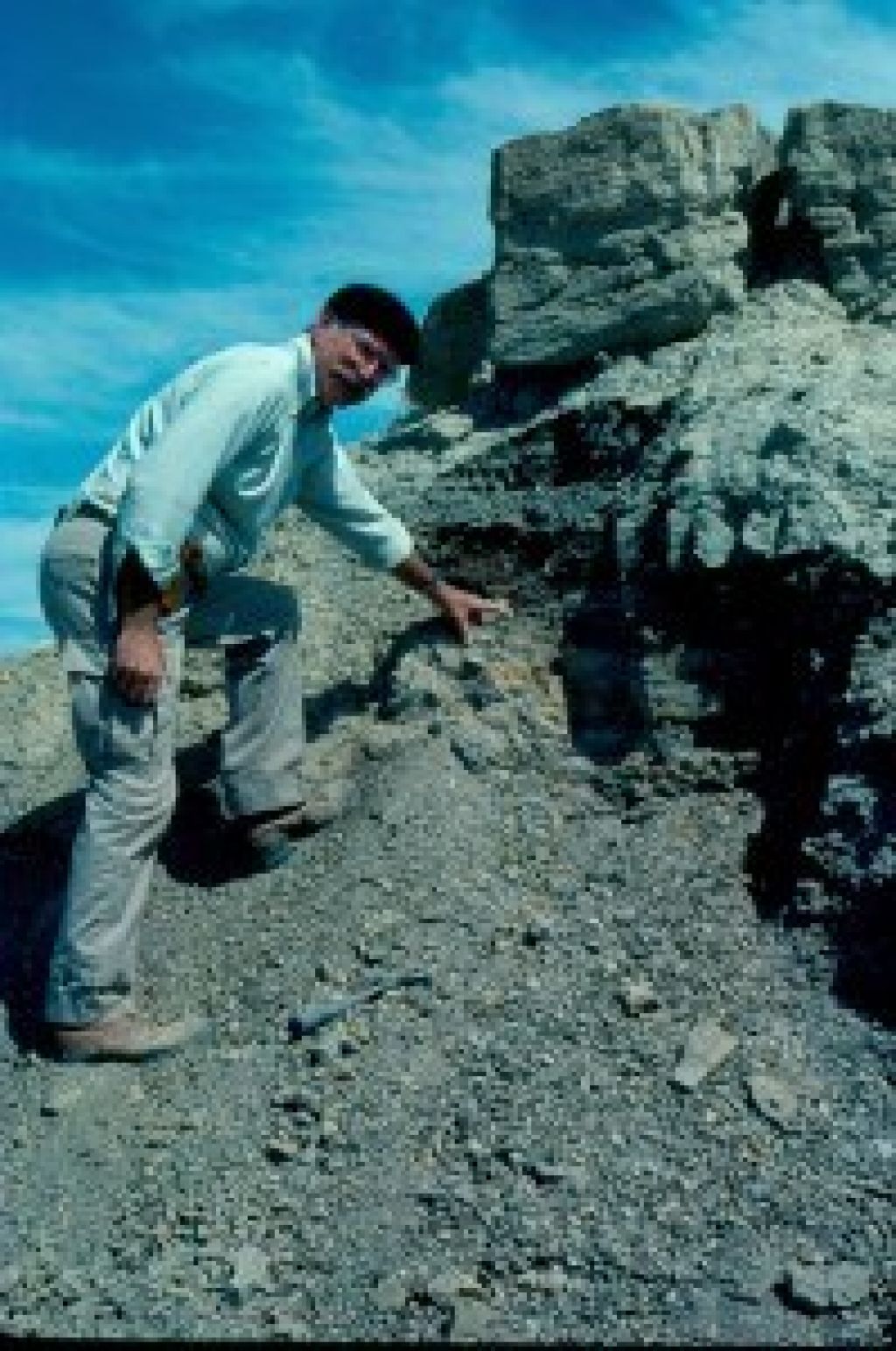
Although Keener continued to maintain the herbarium in Whitmore Lab on a volunteer basis, there was no consistent curation of the collection until 2007. That year, Alfred Traverse, an emeritus professor of Geology and Biology became Curator, although the position remained voluntary. In 2008, Traverse added his personal collection of 6,000 specimens to the herbarium, the culmination of his extensive investigations into the living relatives of plants he studied in the pollen record. The following year, the PAC integrated the Penn State Mont Alto Herbarium (PACMA), a total of 3,238 specimens including John Harshberger’s noteworthy collection of trees and shrubs (Traverse 2013) which he willed to the Forestry School in 1930.
Under Traverse, the PAC collection grew to number almost 107,000 specimens, including the accessioning of hundreds of historic algal specimens from coastal California. In 2011, Ronald Pursell, Professor Emeritus of Botany rejoined the PAC as Curator of Bryophytes while Traverse continued to serve as lead Curator until late 2014. In 2015, renewed interest in natural history collections at the University led to the appointment of Sarah Chamberlain as the first paid Curator of the PAC in almost two decades. Chamberlain specializes in graminoids and is the author of a Field Guide to Grasses of the Mid-Atlantic Region (in press). Under Chamberlain, the PAC will integrate approximately 3,000 voucher specimens currently held by Riparia, a research center within the Department of Geography. In 2016 and beyond, the PAC Herbarium, with an expert staff and expanded facility, is poised for its next phase of growth and development.
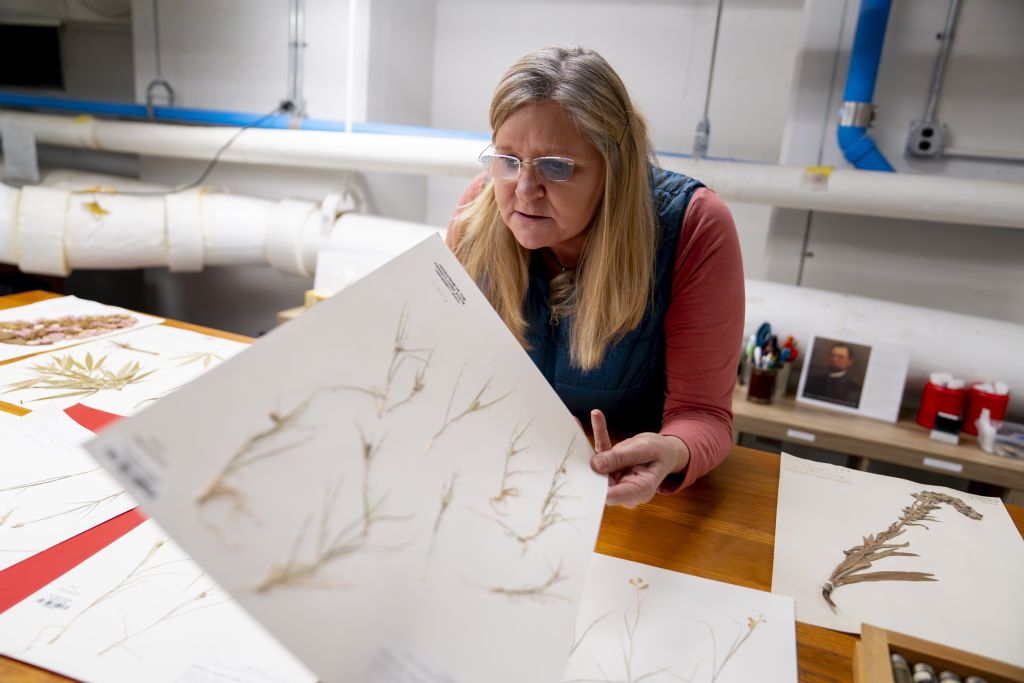
Collection Notes
The PAC Herbarium holds the third largest collection of archival plants and seeds in the Commonwealth and is the only significant, scientifically functioning herbarium in Central Pennsylvania. The PAC’s taxonomic holdings range in age from the early-1800s to present. In addition to the 3000 Pugh specimens on which the herbarium was founded, the taxonomic strengths of the PAC include:
- County Floras – A number of students worked on county floras of Pennsylvania, particularly Blair, Centre, Clearfield, Columbia, Huntingdon, Jefferson, Lycoming, and York Counties.
- Chenopodium – the PAC holdings include Herbert Wahl’s collection of North American species of Chenopodium. Wahl was an expert on this genus and his collection forms the foundation of any subsequent research in this field.
- Ranunculaceae – Collections by Wahl, Westerfeld, Keener and students have enlarged collections in this important family. Keener’s examination of the genus Clematis led to a study of the Mid-Appalachian shale barren flora and its distribution patterns. PAC has a collection of all recognized endemics from this region.
- Carex – The Carex collection includes important voucher material that formed the basis of Wahl’s doctoral dissertation and seminal manuscript on Carex published in the American Journal of Botany in 1940 (Wahl 1940). Several of Keener’s students also conducted research on Carex. In particular, Paul Rothrock’s key to Pennsylvania Carex has been incorporated into the Plants of Pennsylvania (Rhoads and Block 2007).
- John Harshberger’s noteworthy collection of trees and shrubs from the Penn State Mont Alto Herbarium (PACMA) integrated into the PAC in 2009.
Summary of the PAC Herbarium important holdings
| Taxon | Preparation Type | # in collection (approx.) | Geographic Coverage |
|---|---|---|---|
| Pugh Collection | mounted | 3000 | Germany, New Jersey, and Pennsylvania |
| Chenopodium | mounted | 2900 | Pennsylvania, North America |
| Ranunculaceae | mounted | 1950 | Pennsylvania, North America |
| Carex | mounted | 6350 | Pennsylvania, North America |
| Harshberger Collection | mounted | 1500 | North America, South America |
| Type specimens | mounted | 62 | North America |
